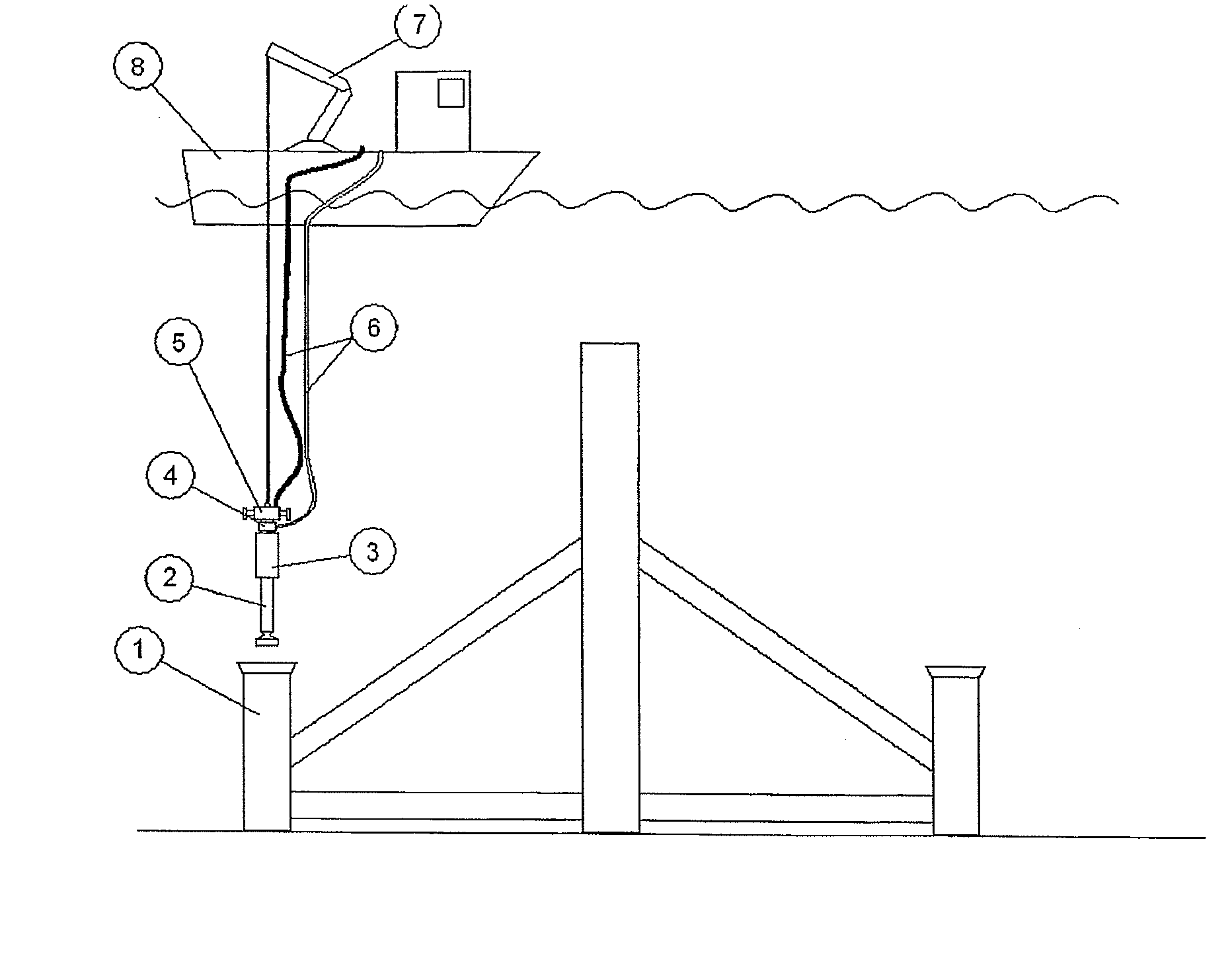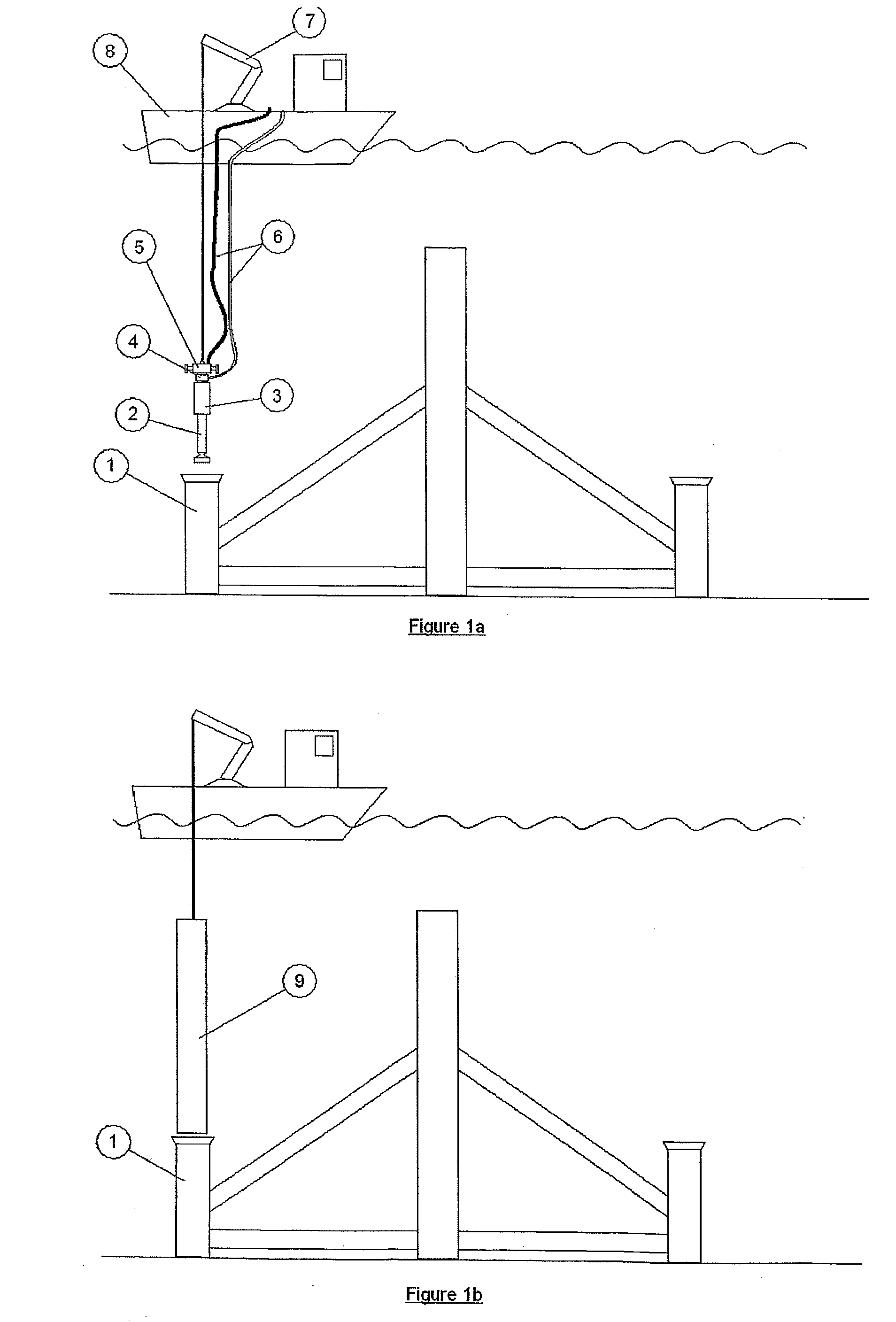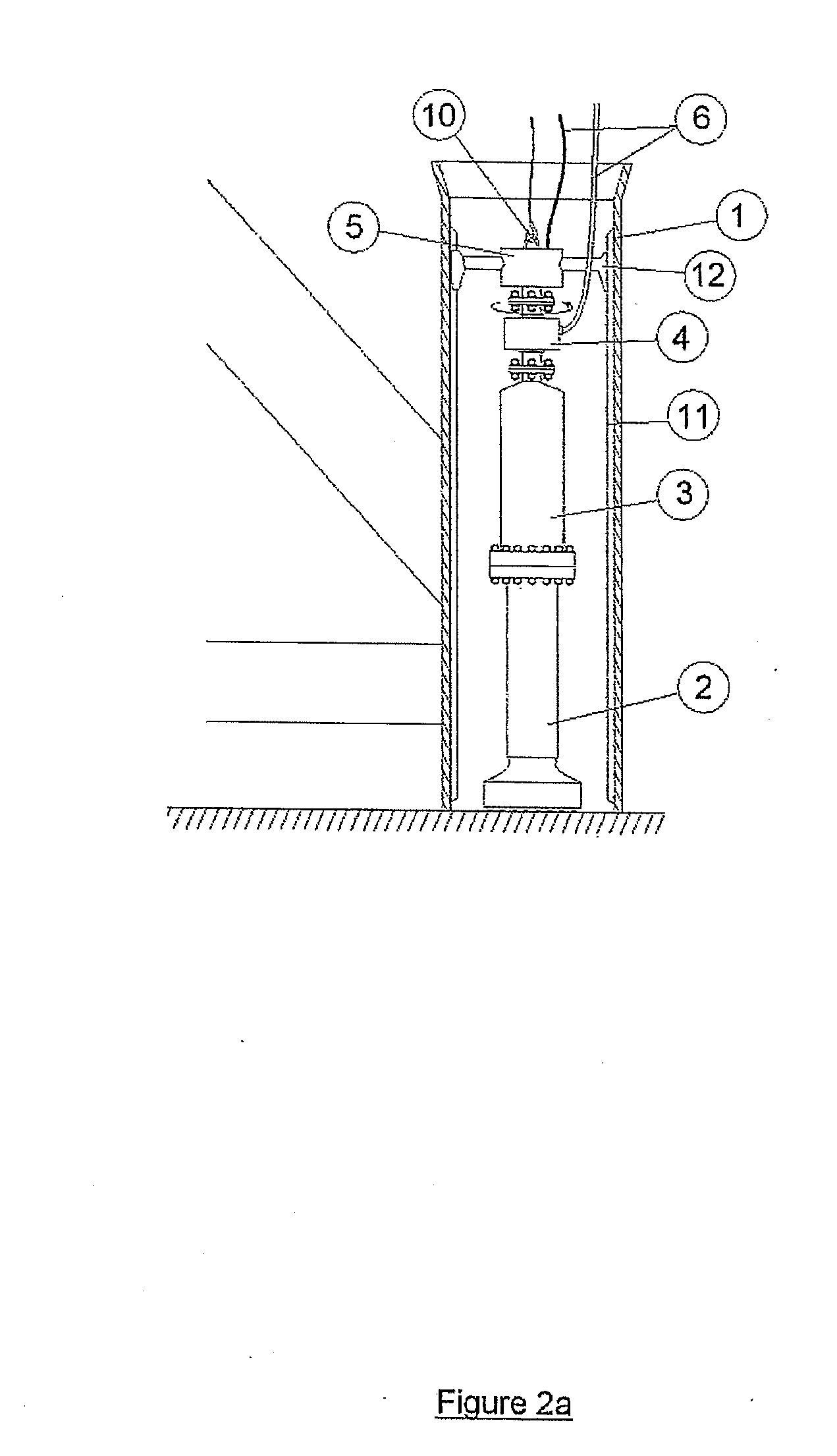Installation of Underwater Anchorages
a technology for installing anchorages and underwater, which is applied in the direction of sea energy generation, bulkheads/piles, tidal stream/damless hydropower, etc. it can solve the problems of high cost, cost-effective cost, and the need for expensive offshore vessels to achieve cost-effectively. achieve the effect of cost-effectiv
- Summary
- Abstract
- Description
- Claims
- Application Information
AI Technical Summary
Benefits of technology
Problems solved by technology
Method used
Image
Examples
Embodiment Construction
[0014]Referring to FIG. 1a, a support structure is positioned on the bed of a body of water. The support structure comprises a central column 30 stabilized by support feet in the form of hollow members 1. In an alternative embodiment there may be only one hollow member, which may be positioned substantially centrally within the support structure.
[0015]A workboat 8 lowers a drill string down into one of the hollow members 1. The drill string is an axial assembly comprising all the equipment necessary to operate the drill, such that all equipment may be recovered by the workboat 8 in a single lift after drilling. This may include, but is not restricted to, weights, drive motors for slow indexing of the drill bit, power swivel to receive the power for the drill from an umbilical whilst allowing the drill to index around, and guidance channels to control the exhaust fluid velocity to ensure the removal of drillings.
[0016]In the embodiment shown in FIG. 1a, the drill string is a percussi...
PUM
 Login to View More
Login to View More Abstract
Description
Claims
Application Information
 Login to View More
Login to View More - R&D
- Intellectual Property
- Life Sciences
- Materials
- Tech Scout
- Unparalleled Data Quality
- Higher Quality Content
- 60% Fewer Hallucinations
Browse by: Latest US Patents, China's latest patents, Technical Efficacy Thesaurus, Application Domain, Technology Topic, Popular Technical Reports.
© 2025 PatSnap. All rights reserved.Legal|Privacy policy|Modern Slavery Act Transparency Statement|Sitemap|About US| Contact US: help@patsnap.com



